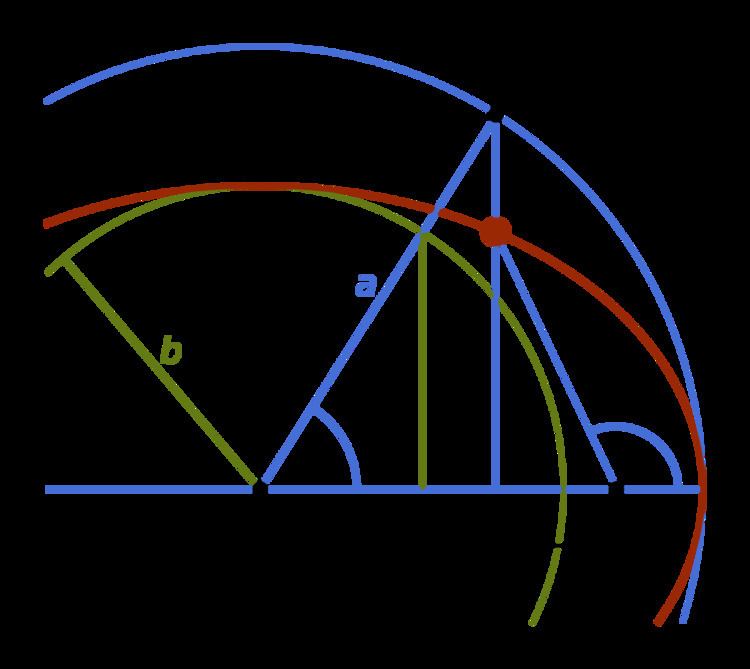 | ||
In celestial mechanics, true anomaly is an angular parameter that defines the position of a body moving along a Keplerian orbit. It is the angle between the direction of periapsis and the current position of the body, as seen from the main focus of the ellipse (the point around which the object orbits).
Contents
- From state vectors
- Circular orbit
- Circular orbit with zero inclination
- From the eccentric anomaly
- Radius from true anomaly
- References
The true anomaly is usually denoted by the Greek letters ν or θ, or the Latin letter f.
As shown in the image, the true anomaly f is one of three angular parameters ("anomalies") that defines a position along an orbit, the other two being the eccentric anomaly and the mean anomaly. Note that the satellite P orbits around the planet which is at position F.
From state vectors
For elliptic orbits, the true anomaly ν can be calculated from orbital state vectors as:
where:
Circular orbit
For circular orbits the true anomaly is undefined, because circular orbits do not have a uniquely-determined periapsis. Instead the argument of latitude u is used:
where:
Circular orbit with zero inclination
For circular orbits with zero inclination the argument of latitude is also undefined, because there is no uniquely determined line of nodes. One uses the true longitude instead:
where:
From the eccentric anomaly
The relation between the true anomaly ν and the eccentric anomaly E is:
or using the sine and tangent:
or equivalently:
Therefore,
where arg(x, y) is the polar argument of the vector (x, y) (available in many programming languages as the library function atan2(y, x) in Fortran and MATLAB, or as ArcTan[x, y] in Wolfram Mathematica).
Radius from true anomaly
The radius (distance from the focus of attraction and the orbiting body) is related to the true anomaly by the formula
where a is the orbit's semi-major axis (segment cz).
